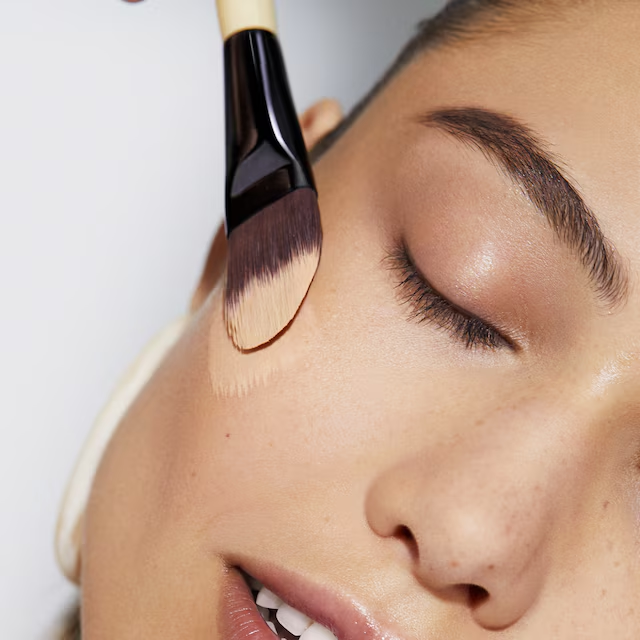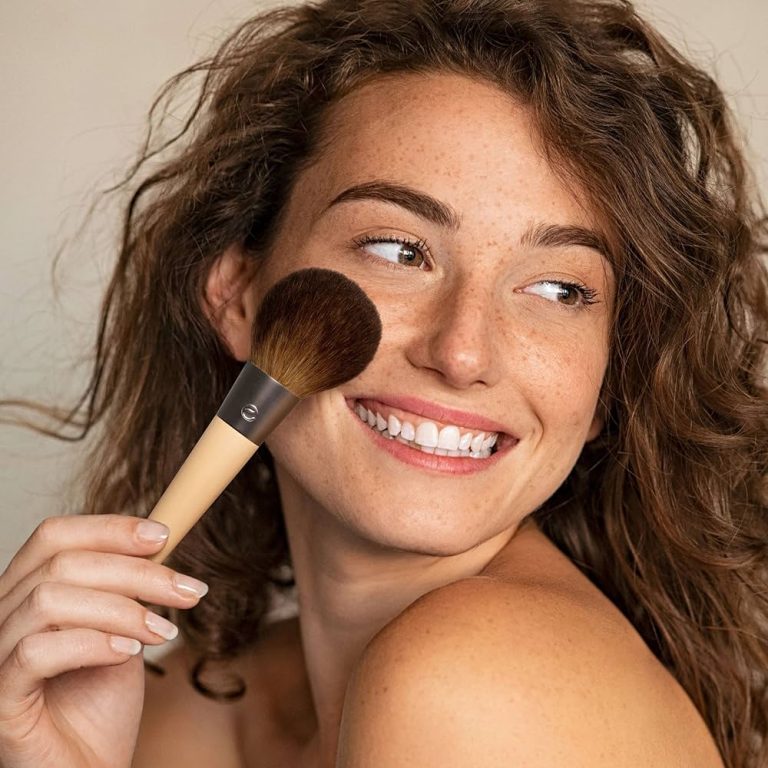
What Does a Foundation Brush Look Like
Introduction to Foundation Brushes
What does a foundation brush look like? Choosing the right foundation brush is essential for a flawless makeup base.Foundation brushes come in many shapes and sizes, each designed for a specific purpose. Whether it’s a full coverage look or a light, natural finish, there’s a brush for every preference.
A flat foundation brush looks like a paintbrush and is perfect for liquid foundations. It helps spread the makeup evenly across the skin. On the other hand, what does a foundation brush look like when you want an airbrushed effect? You might pick up a stippling brush, characterized by its layered bristles, to achieve that particular finish.
Tapered foundation brushes, with their unique shape, allow for precise application. These brushes can reach every contour of your face, making foundations look seamless. Whereas, a kabuki brush, with its dense bristles, is great for buffing and blending, giving a polished look with powder foundations.
There are also options beyond traditional brushes. A silicone blender is a non-absorbent tool that applies foundation without wasting product. And let’s not forget the beauty blender, a sponge that’s beloved for its versatility in applying various types of makeup.
The purpose behind each of these tools is to create a canvas that enhances your beauty. A good brush can mean the difference between a streaky appearance and a flawless finish. With the right knowledge, you can choose the best tool for your skin type, foundation preference, and desired look.

Essential Characteristics of a Foundation Brush
What does a foundation brush look like? When selecting a foundation brush, it’s important to consider certain essential characteristics.
Bristle Types and Shapes
Bristles make a big difference in makeup application. Here’s a quick guide:
- Natural Bristles: Best for powder-based products, they’re soft and have a luxurious feel.
- Synthetic Bristles: Ideal for liquid and cream foundations, they don’t absorb product, ensuring a smooth application.
- Shape Matters: Flat brushes are great for full-face coverage, while tapered and angled brushes offer precision for contours and hard-to-reach areas.
- Density is Key: Dense brushes, like kabuki brushes, provide a polished look when buffing powder foundations.
These characteristics of the bristles and shapes of foundation brushes impact the final makeup result. Choose wisely to achieve your desired coverage and finish.

How to Use a Tapered Foundation Brush
Using a tapered foundation brush correctly can give you a precise and flawless makeup application. What does a foundation brush look like? Below are some simple steps to master the expert application of makeup using this essential tool.
Steps for Expert Application
- Prep Your Skin: Start with clean, moisturized skin for a smooth base.
- Dip and Tap: Dip the brush into your liquid foundation, then tap off excess product.
- Apply to Face: Start applying foundation at the center of your face.
- Blend Outward: Use the brush to blend the foundation outward towards your hairline and jaw.
- Reach The Edges: The tapered shape lets you reach the sides of the nose and under eyes.
- Buff Gently: With light, circular motions, gently buff the foundation into the skin. This helps to create a seamless finish.
- Layer if Needed: For more coverage, add a second layer of foundation using the same steps.
- Clean the Brush: After use, clean the brush to prevent buildup and maintain performance.
Remember, the key to using a tapered foundation brush is to achieve an even and natural-looking coverage that enhances your facial features without leaving harsh lines. The tapered design is perfect for getting into those hard-to-reach areas, ensuring that your entire face is covered beautifully.
Stippling Brush for an Airbrushed Finish
Achieving a flawless complexion is easier with the right tools, like the stippling brush.
Technique and Best Practices
What does a foundation brush look like? For a perfect airbrushed finish, use these simple steps with a stippling brush.
- Lightly Dip: Gently dip the stippling brush into your liquid or cream foundation.
- Dab Off Excess: Remove excess foundation on the back of your hand to avoid a cakey look.
- Stipple on Face: Lightly press the brush onto your skin using small, quick motions.
- Blend Well: After stippling, blend with swirling motions for an even application.
- Layering: Apply more layers for increased coverage, but keep each layer light.
- Clean Regularly: Wash your brush often to maintain its performance and avoid bacteria buildup.
Use a stippling brush for creams and liquids to gently layer and blend for a smooth finish.

The Versatility of a Kabuki Brush
Kabuki brushes are staple tools in any makeup kit. They are most recognized for their dense bristles and ability to buff powder products into the skin.What does a foundation brush look like? However, a kabuki brush is not limited to just one use.
Applications Beyond Foundation
Kabuki brushes can serve multiple purposes in your beauty routine. Here’s how you can use them:
- Loose Powder Application: Perfect for applying loose powder to set your makeup.
- Blush: Swirl on blush for a diffused, natural glow.
- Bronzer: Use for bronzer to add warmth to the skin with soft strokes.
- Body Shimmer: A larger kabuki brush is ideal for applying shimmer on the body.
Their round shape and densely packed bristles make them ideal for blending and creating a soft finish. By using circular motions, kabuki brushes distribute product evenly. This means no harsh lines or streaks – just a smooth, polished look.
Whether applying foundation, bronzer, blush, or body products, the kabuki brush’s versatility makes it a must-have in your collection. Its ability to adapt to various products and parts of the face and body is what makes it such a valuable tool.
Remember to regularly clean your kabuki brush to maintain its performance. Clean brushes apply makeup more effectively and prevent the spread of bacteria. Whether you’re an expert or a beginner, the kabuki brush can elevate your makeup application and help you achieve a flawless look.

Mastering the Art of Contouring with a Contour Brush
Contouring is a makeup skill that can define your face’s structure. With the right contour brush, you create shadows and highlights that enhance your facial features. Follow these tips to master contouring with ease.
Contouring Tips and Brush Angles
When contouring, choose a contour brush with an angled edge for precision. Pick a color two shades darker than your skin tone for shadowing. Map out areas like your cheekbones, jawline, and forehead.
Start with light strokes and build up the color for a natural look. Use the angled brush to fit the contours of your face, ensuring a sculpted look. Always blend well to avoid harsh lines and a more natural transition.
For a slimmer nose, draw thin lines down the sides with the contour brush and blend. The angled bristles make it easier to follow the natural shape of your nose without being too harsh.
Remember to clean your contour brush after each use to keep it in good condition. Regular cleaning prevents bacteria build-up and ensures smooth application every time.
Silicone and Beauty Blenders as Alternatives
Comparing Application Techniques
Silicone and beauty blenders have distinct application techniques compared to brushes. Silicone blenders are teardrop-shaped and do not soak up product. They work best with stippling motions to blend foundation seamlessly. Beauty blenders need to be dampened before use. They create a dewy, natural finish when used to dab on foundation.
For silicone blenders:
- Use a small amount of foundation.
- Stipple onto the face for an even layer without waste.
For beauty blenders:
- Wet the sponge, squeeze out excess water.
- Bounce over the skin for a natural, airbrushed look.
Both alternatives are easy to clean, which helps keep skin clear. They provide a streak-free finish and can reach all areas of the face. Remember, whether you choose a brush, a silicone blender, or a beauty sponge, the goal is a flawless face.

Cleaning and Maintenance Tips for Foundation Brushes
Proper care extends the life of your makeup tools. Keeping your foundation brushes clean is not just a matter of hygiene; it also helps your application remain top-notch and extends the brush’s lifespan. Here are simple yet effective tips for maintaining your foundation brushes.
Preserving Brush Integrity
- Regular Cleaning: Wash brushes weekly to prevent makeup buildup and bacteria growth.
- Gentle Soap: Use baby shampoo or a mild soap to protect bristles.
- Warm Water: Rinse with lukewarm water, avoiding hot water that can damage fibers.
- Don’t Soak: Submerging the whole brush can loosen the glue and lead to shedding.
- Pat Dry: After rinsing, pat brushes gently with a towel to remove excess water.
- Reshape Bristles: While damp, reshape the brush head to its original form.
- Air Dry: Lay brushes flat on a towel to dry. Avoid standing them up before they’re completely dry.
Respect the structure and function of your brushes by cleaning them properly. Your brushes will thank you by lasting longer and performing better.

